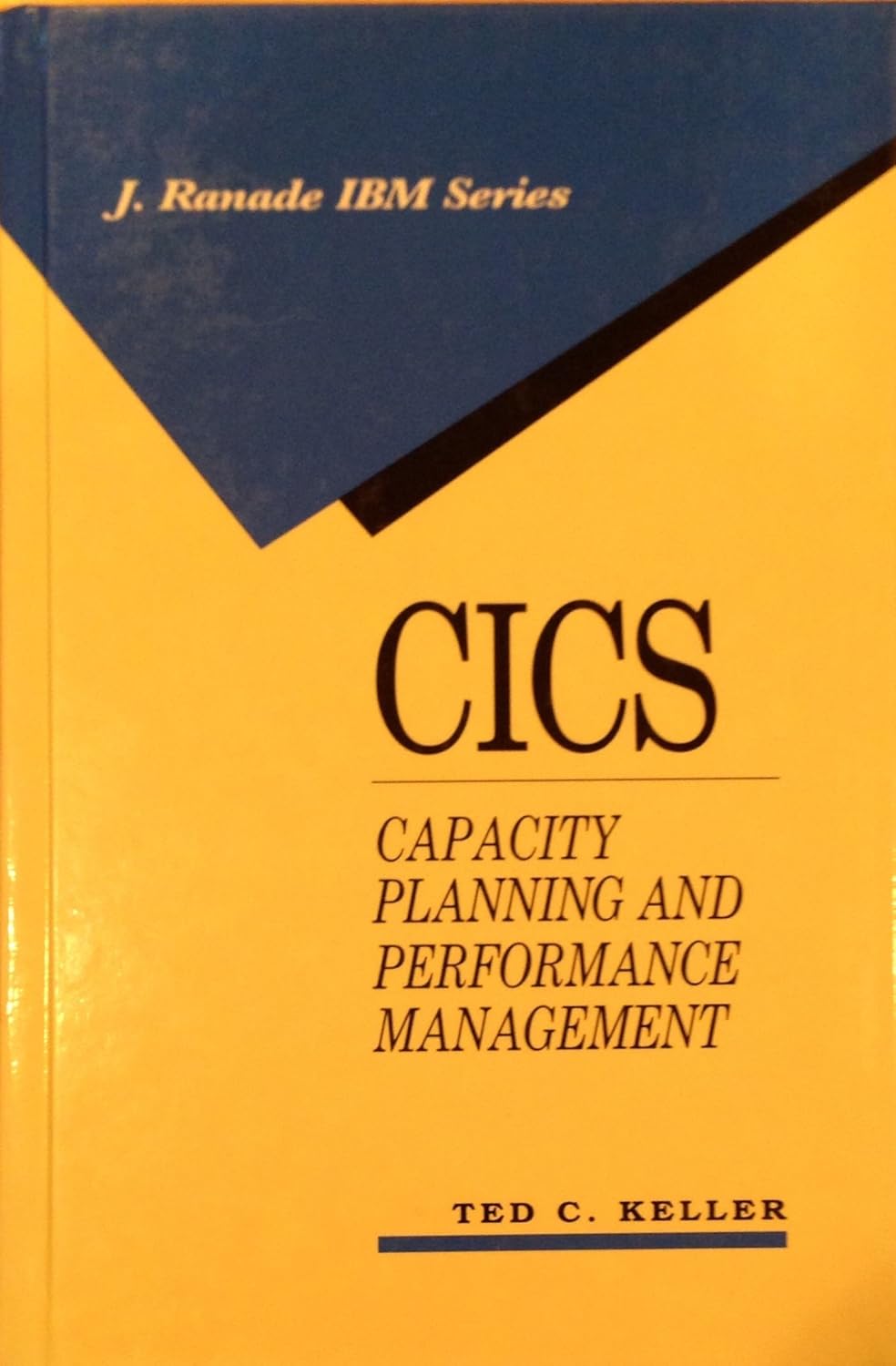Your cart is currently empty!
Tag: Capacity

Future Trends in Data Center Capacity Planning
Data centers are the backbone of modern businesses, providing the infrastructure needed to store and process vast amounts of data. As technology continues to evolve at a rapid pace, data center capacity planning is becoming increasingly important to ensure that businesses can keep up with the growing demands of their digital operations. In this article, we will explore some of the future trends in data center capacity planning that businesses should be aware of.One of the key trends in data center capacity planning is the increasing use of artificial intelligence (AI) and machine learning algorithms. These technologies can help data center managers analyze historical data and predict future capacity requirements more accurately. By using AI and machine learning, businesses can better understand their data center utilization patterns and plan for future growth more effectively.
Another trend in data center capacity planning is the use of edge computing. Edge computing involves placing computing resources closer to the location where data is being generated, rather than relying solely on centralized data centers. This can help reduce latency and improve performance for applications that require real-time data processing. As more businesses adopt edge computing strategies, data center capacity planning will need to account for the additional resources required to support these distributed computing environments.
Cloud computing is also influencing data center capacity planning. Many businesses are moving their workloads to the cloud to take advantage of the scalability and flexibility it offers. Data center managers need to consider how their on-premises data centers will integrate with cloud services, and plan for hybrid cloud environments that require seamless connectivity between on-premises and cloud resources.
As data center technology continues to evolve, businesses are also looking for ways to improve energy efficiency and reduce their carbon footprint. Data centers are notorious for their high energy consumption, so implementing energy-efficient technologies such as liquid cooling systems and renewable energy sources can help businesses reduce their environmental impact while also lowering operating costs.
In conclusion, data center capacity planning is a critical aspect of managing a modern digital business. By staying informed about the latest trends in data center technology, businesses can ensure that their data center infrastructure is equipped to handle the demands of the future. From leveraging AI and machine learning for more accurate capacity forecasting to embracing edge computing and cloud services, businesses can stay ahead of the curve and ensure that their data center capacity planning strategies are robust and scalable for the future.

Best Practices for Data Center Capacity Planning
Data centers are the backbone of any organization’s IT infrastructure, providing the necessary resources for storing and processing data. As the demand for digital services continues to grow, data center capacity planning has become increasingly important to ensure that organizations have the necessary resources to meet their needs. In this article, we will discuss some best practices for data center capacity planning to help organizations effectively manage their data center resources.1. Understand current and future needs: The first step in data center capacity planning is to understand the current and future needs of your organization. This includes taking stock of existing infrastructure, analyzing historical data usage patterns, and forecasting future growth. By having a clear understanding of your organization’s data needs, you can better plan for future capacity requirements.
2. Monitor and analyze performance metrics: Monitoring and analyzing performance metrics is crucial for effective data center capacity planning. By tracking metrics such as server utilization, bandwidth usage, and storage capacity, you can identify potential bottlenecks and plan for additional capacity as needed. Regularly reviewing performance metrics will help you make informed decisions about when to scale up or scale down your data center resources.
3. Implement virtualization and cloud computing: Virtualization and cloud computing technologies can help organizations maximize their data center resources and improve efficiency. By consolidating servers and storage through virtualization, organizations can reduce hardware costs and improve resource utilization. Cloud computing also offers flexibility and scalability, allowing organizations to easily scale their resources up or down as needed.
4. Plan for redundancy and disaster recovery: Redundancy and disaster recovery planning are essential components of data center capacity planning. By implementing redundant systems and backup strategies, organizations can minimize downtime and ensure continuity of operations in the event of a disaster. It is important to have a comprehensive disaster recovery plan in place to protect critical data and ensure business continuity.
5. Regularly review and update capacity plans: Data center capacity planning is an ongoing process that requires regular review and updates. As data needs and technologies evolve, organizations must continuously assess their capacity requirements and adjust their plans accordingly. By staying proactive and flexible, organizations can effectively manage their data center resources and adapt to changing business needs.
In conclusion, effective data center capacity planning is essential for organizations to meet their data processing and storage needs. By understanding current and future needs, monitoring performance metrics, implementing virtualization and cloud computing, planning for redundancy and disaster recovery, and regularly reviewing and updating capacity plans, organizations can optimize their data center resources and ensure business continuity. By following these best practices, organizations can effectively manage their data center capacity and meet the demands of a growing digital economy.

How DCIM Tools Can Help Data Centers Meet Increasing Demands for Performance and Capacity
In today’s digital age, data centers play a crucial role in supporting the ever-growing demands for performance and capacity. As organizations continue to rely on data centers for their operations, it has become imperative for data center managers to find ways to optimize efficiency and productivity. One tool that has proven to be essential in this regard is Data Center Infrastructure Management (DCIM) software.DCIM tools provide data center managers with a comprehensive view of their infrastructure, allowing them to monitor and manage all aspects of their data center operations. This includes monitoring power usage, cooling systems, server capacity, and overall performance. By having a centralized platform to track and analyze data center operations, managers can make informed decisions to improve efficiency and optimize resource allocation.
One of the key benefits of DCIM tools is their ability to help data centers meet increasing demands for performance and capacity. As organizations continue to expand their digital footprint, data centers are under pressure to support more workloads and process more data. DCIM tools provide real-time visibility into the performance of servers and other infrastructure components, allowing managers to identify potential bottlenecks and optimize resources to meet these demands.
Additionally, DCIM tools can help data center managers plan for future capacity needs. By analyzing historical data and trends, managers can forecast future growth and plan for additional capacity as needed. This proactive approach can help data centers avoid costly downtime and ensure that they are able to meet the performance requirements of their users.
Furthermore, DCIM tools can also help data centers improve energy efficiency and reduce costs. By monitoring power usage and cooling systems, managers can identify areas where energy is being wasted and implement strategies to improve efficiency. This not only reduces operating costs but also helps data centers meet sustainability goals and reduce their environmental impact.
In conclusion, DCIM tools are essential for helping data centers meet the increasing demands for performance and capacity. By providing real-time visibility, forecasting capacity needs, and improving energy efficiency, DCIM tools enable data center managers to optimize their operations and ensure that they can continue to support the growing digital needs of organizations. Investing in DCIM software is a wise decision for any data center looking to stay ahead of the curve and meet the challenges of the modern digital landscape.

The Impact of Cloud Computing on Data Center Capacity Planning
Cloud computing has revolutionized the way businesses store, manage, and access their data. With the increasing adoption of cloud services, data center capacity planning has become a critical aspect of IT infrastructure management.Cloud computing allows businesses to store their data and applications on remote servers, which are accessed over the internet. This eliminates the need for physical servers and storage devices, reducing the space and resources required for data storage. As a result, businesses can scale their storage capacity up or down based on their needs, without the constraints of physical infrastructure.
One of the key impacts of cloud computing on data center capacity planning is the shift from capital expenditure to operational expenditure. Instead of investing in expensive hardware and infrastructure upfront, businesses can pay for cloud services on a pay-as-you-go basis. This allows businesses to quickly scale their storage capacity up or down as needed, without the need for costly upgrades or maintenance.
Cloud computing also enables businesses to optimize their data center capacity planning by leveraging the scalability and flexibility of cloud services. With cloud computing, businesses can easily provision additional storage capacity or computing resources in a matter of minutes, rather than weeks or months. This agility allows businesses to respond quickly to changing business needs and market demands, without being limited by the constraints of physical infrastructure.
Furthermore, cloud computing enables businesses to improve their data center efficiency and utilization. By consolidating their data storage and computing resources in the cloud, businesses can reduce the amount of physical infrastructure required to support their operations. This not only reduces the space and resources needed for data center capacity planning but also lowers energy consumption and operating costs.
In conclusion, cloud computing has had a significant impact on data center capacity planning. By shifting to a more flexible and scalable model of data storage and management, businesses can optimize their data center capacity planning, reduce costs, and improve efficiency. As the adoption of cloud services continues to grow, businesses must continue to adapt their data center capacity planning strategies to take full advantage of the benefits that cloud computing has to offer.

Cics: Capacity Planning and Performance Management (J RANADE SERIES ON COMPUTER COMMUNICATIONS)
Price: $47.20
(as of Nov 19,2024 19:03:33 UTC – Details)
Publisher : McGraw-Hill (January 1, 1993)
Language : English
Hardcover : 407 pages
ISBN-10 : 0070337837
ISBN-13 : 978-0070337831
Item Weight : 1.65 pounds
Dimensions : 6.25 x 1 x 9.25 inches
Cics: Capacity Planning and Performance Management (J RANADE SERIES ON COMPUTER COMMUNICATIONS)In today’s fast-paced digital world, businesses rely heavily on their computer systems to ensure smooth operations and maximize productivity. With the increasing reliance on technology, it is essential for organizations to effectively manage the capacity and performance of their systems to meet the demands of their users.
One of the key components of capacity planning and performance management in the world of computer communications is Cics, or Customer Information Control System. Cics is a transaction processing system that is widely used in large-scale, mission-critical applications. It provides a platform for developers to build and deploy applications that can handle large volumes of transactions efficiently.
In the book “Cics: Capacity Planning and Performance Management,” author J Ranade delves into the intricacies of managing the capacity and performance of Cics systems. Ranade outlines the best practices for planning and monitoring the capacity of Cics systems, as well as strategies for optimizing performance to ensure that applications run smoothly and efficiently.
This comprehensive guide is a must-read for IT professionals, system administrators, and developers who work with Cics systems. By implementing the strategies outlined in this book, organizations can ensure that their Cics systems are running at peak performance, meeting the needs of their users, and supporting their business goals.
Overall, “Cics: Capacity Planning and Performance Management” is a valuable resource for anyone looking to enhance the capacity and performance of their Cics systems. Whether you are a seasoned Cics professional or just starting out, this book provides the tools and techniques you need to optimize your systems and drive business success.
#Cics #Capacity #Planning #Performance #Management #RANADE #SERIES #COMPUTER #COMMUNICATIONS
Navigating the Challenges of Data Center Capacity Planning
Data center capacity planning is a critical aspect of managing a data center infrastructure. With the increasing demand for data storage and processing power, data center managers must carefully navigate the challenges of capacity planning to ensure that their facilities can meet current and future needs.One of the main challenges of data center capacity planning is forecasting future requirements. This involves predicting how much storage and processing power will be needed in the coming months and years. Factors such as the growth of data volumes, new applications, and technological advancements must all be taken into account when making these predictions. Failure to accurately forecast future requirements can result in under-provisioning, leading to performance issues and downtime, or over-provisioning, which can waste resources and increase costs.
Another challenge is managing the physical constraints of the data center facility. Data centers have limited space, power, and cooling capacity, which must be carefully managed to ensure that the infrastructure can support the required workload. Data center managers must balance the need for increased capacity with the constraints of the physical environment, making decisions on equipment upgrades, consolidation, and virtualization to optimize resource utilization.
In addition to forecasting and physical constraints, data center managers must also consider the financial implications of capacity planning. Investing in new equipment or upgrading existing infrastructure can be costly, and budget constraints may limit the options available. Data center managers must carefully weigh the costs and benefits of different capacity planning strategies to ensure that they are making the most cost-effective decisions for their organization.
To navigate these challenges effectively, data center managers can implement a comprehensive capacity planning process that includes regular monitoring of usage trends, collaboration with stakeholders to understand future requirements, and the use of forecasting tools and models to predict future needs. By taking a proactive and strategic approach to capacity planning, data center managers can ensure that their facilities are able to meet the demands of today and tomorrow.
In conclusion, navigating the challenges of data center capacity planning requires careful consideration of forecasting, physical constraints, and financial implications. By implementing a comprehensive capacity planning process, data center managers can effectively manage their infrastructure to meet current and future needs, ensuring optimal performance and efficiency for their organization.

The Resource Management and Capacity Planning Handbook: A Guide to Maximizing the Value of Your Limited People Resources
Price:$55.00– $43.78
(as of Nov 19,2024 15:44:24 UTC – Details)From the brand




As a leading global education company, our mission is to partner with educators, learners, and professionals to help them access all the value that education can offer, no matter where their starting points may be.
For over 130 years, we have never stopped innovating to meet the ever-changing needs of educators and learners around the world – and will continue to support and celebrate their efforts every step of the way.


Publisher : McGraw Hill; 1st edition (September 4, 2014)
Language : English
Hardcover : 256 pages
ISBN-10 : 007183625X
ISBN-13 : 978-0071836258
Item Weight : 2.31 pounds
Dimensions : 6 x 0.77 x 9 inches
Are you struggling to effectively manage your team’s workload and resources? Look no further than The Resource Management and Capacity Planning Handbook. This comprehensive guide is designed to help you maximize the value of your limited people resources and ensure that your team is working at full capacity.Whether you’re a project manager, team leader, or HR professional, this handbook is packed with practical tips, tools, and techniques to help you streamline your resource management processes and make the most of your team’s skills and expertise.
From creating accurate project timelines and budgets to identifying and resolving resource bottlenecks, this handbook covers everything you need to know to effectively plan and allocate your team’s resources. With real-world examples and case studies, you’ll learn how to optimize your team’s productivity and ensure that you’re getting the most out of your limited resources.
Don’t let poor resource management hold your team back. Get your copy of The Resource Management and Capacity Planning Handbook today and start maximizing the value of your people resources.
#Resource #Management #Capacity #Planning #Handbook #Guide #Maximizing #Limited #People #Resources
Strategies for Scalable Data Center Capacity Planning
In today’s digital age, data centers play a crucial role in storing and managing vast amounts of information for businesses of all sizes. With the exponential growth of data being generated every day, it is essential for data center managers to have a solid capacity planning strategy in place to ensure that their facilities can meet the increasing demands for storage and processing power.Scalable data center capacity planning involves designing and implementing a flexible infrastructure that can easily accommodate growth and changes in workload. By following a few key strategies, data center managers can effectively plan for scalability and ensure that their facilities can meet the evolving needs of their organization.
1. Understand current and future requirements: The first step in scalable data center capacity planning is to assess the current workload and storage requirements of the organization. This includes analyzing data usage patterns, application performance, and future growth projections. By understanding the current and future needs of the organization, data center managers can better plan for scalability and ensure that the infrastructure can support future growth.
2. Implement a modular design: One of the key principles of scalable data center capacity planning is to design the infrastructure in a modular fashion. This means breaking down the data center into smaller, self-contained units that can be easily added or removed as needed. By using a modular design, data center managers can quickly scale up or down their capacity without disrupting the entire infrastructure.
3. Virtualization and cloud computing: Virtualization and cloud computing technologies play a significant role in scalable data center capacity planning. By virtualizing servers and storage resources, data center managers can consolidate workloads, improve resource utilization, and easily scale up or down capacity as needed. Cloud computing also offers the flexibility to quickly provision additional resources on-demand, making it an ideal solution for scalable capacity planning.
4. Utilize predictive analytics: Predictive analytics can help data center managers forecast future capacity requirements based on historical data and trends. By analyzing data usage patterns, application performance, and growth projections, data center managers can make informed decisions about when to scale up capacity and how much resources will be needed. Predictive analytics can also help identify potential bottlenecks and optimize resource allocation for maximum efficiency.
5. Regular monitoring and performance tuning: Scalable data center capacity planning is an ongoing process that requires regular monitoring and performance tuning. By monitoring key performance metrics, such as CPU utilization, memory usage, and storage capacity, data center managers can identify potential bottlenecks and proactively address any issues before they impact performance. Performance tuning involves optimizing resource allocation, fine-tuning configurations, and making adjustments to ensure optimal performance and scalability.
In conclusion, scalable data center capacity planning is essential for ensuring that data centers can meet the evolving needs of organizations in today’s digital age. By understanding current and future requirements, implementing a modular design, leveraging virtualization and cloud computing technologies, utilizing predictive analytics, and regularly monitoring and performance tuning, data center managers can effectively plan for scalability and ensure that their facilities can support the growing demands for storage and processing power.

Maximizing Efficiency Through Data Center Capacity Planning
Data centers are the backbone of modern businesses, serving as the central hub for storing, processing, and distributing data. With the increasing reliance on digital technologies, businesses are faced with the challenge of maximizing efficiency in their data centers to meet the growing demand for computing power and storage capacity. One key aspect of achieving this efficiency is through data center capacity planning.Data center capacity planning involves analyzing current and projected data center requirements to ensure that the infrastructure can meet the needs of the business. This includes evaluating the existing infrastructure, identifying potential bottlenecks, and determining the optimal allocation of resources to maximize efficiency.
By implementing effective capacity planning strategies, businesses can achieve several benefits, including:
1. Improved Performance: By accurately forecasting future data center requirements, businesses can ensure that the infrastructure is capable of meeting the demands of applications and services. This can help prevent performance issues and downtime, ensuring a seamless user experience.
2. Cost Savings: By optimizing resource allocation and eliminating unnecessary capacity, businesses can reduce infrastructure costs and improve the overall return on investment. Capacity planning can help identify opportunities for consolidation, virtualization, and other efficiency measures to lower operational expenses.
3. Scalability: As business needs evolve and grow, data centers must be able to scale to accommodate increased demand. Capacity planning allows businesses to anticipate future growth and plan for additional capacity in a timely manner, ensuring that the infrastructure can support the organization’s expansion.
4. Energy Efficiency: Data centers are significant consumers of energy, and optimizing capacity can help reduce power consumption and lower carbon emissions. By rightsizing infrastructure and implementing energy-efficient technologies, businesses can minimize their environmental impact and reduce operating costs.
To effectively maximize efficiency through data center capacity planning, businesses should follow a structured approach that includes the following steps:
1. Assess Current Infrastructure: Start by evaluating the existing data center infrastructure, including servers, storage, networking equipment, and cooling systems. Identify any bottlenecks or constraints that may be limiting performance and capacity.
2. Define Requirements: Work closely with stakeholders to understand current and future data center requirements, including compute, storage, and networking needs. Consider factors such as application workloads, data growth, and business expansion plans.
3. Forecast Demand: Use historical data and trends to forecast future demand for data center resources. Consider factors such as seasonality, growth projections, and new initiatives that may impact capacity requirements.
4. Develop a Capacity Plan: Based on the assessment and demand forecast, develop a capacity plan that outlines the required resources, including servers, storage, and networking equipment. Consider factors such as redundancy, scalability, and disaster recovery requirements.
5. Implement Monitoring and Reporting: Implement monitoring tools to track key performance metrics and resource utilization in real-time. Regularly review and analyze data to identify trends, optimize resource allocation, and make informed decisions.
6. Continuously Improve: Capacity planning is an ongoing process that requires regular review and adjustment to meet changing business needs. Continuously monitor performance, analyze data, and make proactive adjustments to optimize efficiency and performance.
In conclusion, maximizing efficiency through data center capacity planning is essential for businesses to meet the growing demands of digital transformation. By following a structured approach and implementing effective strategies, businesses can optimize resource allocation, improve performance, and reduce costs in their data centers. Investing in capacity planning can help businesses stay competitive, agile, and scalable in a rapidly evolving digital landscape.

How to Effectively Manage Data Center Capacity Planning
Data centers are the backbone of any organization’s IT infrastructure, serving as the central hub for storing, managing, and processing data. With the exponential growth of data in today’s digital age, it is crucial for businesses to effectively manage their data center capacity planning to ensure optimal performance and scalability.Capacity planning is the process of determining the required capacity of a data center to meet the current and future needs of the organization. It involves analyzing factors such as storage, computing power, networking, and cooling requirements to ensure that the data center can support the organization’s IT operations efficiently.
Here are some key strategies to effectively manage data center capacity planning:
1. Understand Current and Future Needs: The first step in capacity planning is to assess the current state of the data center, including existing infrastructure, applications, and workloads. It is essential to understand the organization’s growth projections and IT requirements to plan for future capacity needs.
2. Utilize Monitoring and Analytics Tools: Monitoring tools can provide real-time insights into the performance and utilization of data center resources. By analyzing data on storage, CPU usage, network traffic, and other metrics, organizations can identify bottlenecks, optimize resource allocation, and plan for future capacity requirements.
3. Implement Virtualization and Cloud Technologies: Virtualization and cloud technologies can help organizations maximize the utilization of data center resources by consolidating workloads and scaling resources dynamically. By virtualizing servers, storage, and networking, organizations can improve efficiency, flexibility, and scalability of their data center infrastructure.
4. Conduct Regular Capacity Assessments: It is important to conduct regular capacity assessments to review the utilization of data center resources and identify potential bottlenecks or overprovisioning. By analyzing historical data and trends, organizations can make informed decisions about optimizing resource allocation and planning for future capacity needs.
5. Plan for Scalability and Flexibility: In today’s dynamic business environment, organizations must plan for scalability and flexibility in their data center capacity planning. By designing a modular and scalable infrastructure, organizations can easily expand or upgrade their data center resources to meet changing business requirements.
6. Consider Power and Cooling Requirements: Power and cooling are critical factors in data center capacity planning, as they directly impact the efficiency and reliability of the infrastructure. Organizations must consider energy-efficient technologies, cooling strategies, and power management solutions to optimize resource utilization and reduce operational costs.
In conclusion, effective data center capacity planning is essential for ensuring optimal performance, scalability, and efficiency of an organization’s IT infrastructure. By understanding current and future needs, utilizing monitoring tools, implementing virtualization and cloud technologies, conducting regular assessments, planning for scalability and flexibility, and considering power and cooling requirements, organizations can successfully manage their data center capacity to support their business operations effectively.
